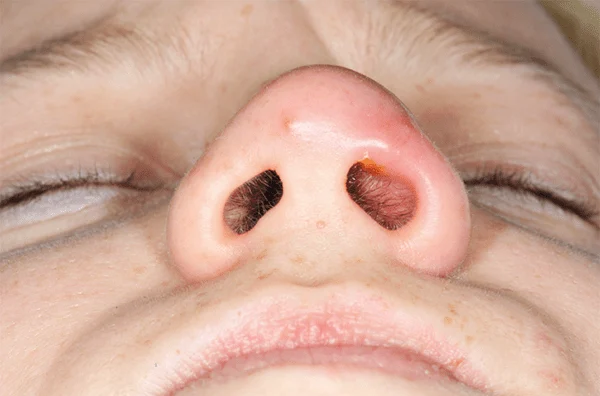Cellulitis is the bacterial infection of the deeper layers of the skin. When it happens to the nose, it is then referred to as nasal cellulitis. Since it is caused by bacteria, it is commonly treated with antibiotics. There are also numerous home remedies that are proven effective against nasal cellulitis.
While very common, nasal cellulitis is something that should be taken very seriously. That’s because it can lead to some complications which can be deadly, such as septicemia (infection of the blood) as well as meningitis (inflammation of the lining of your spinal cord and brain).
Here are some of the most important matters you need to know about nasal cellulitis:
Causes
There are a couple of bacteria that can be blamed for nasal cellulitis — one of them is streptococcus or strep, and the other is staphylococcus or staph. Do take note that both of them are very much likely to be present on your skin at any given moment. Needless to say, they are harmless — usually.
However, it’s an entirely different story if any of the two gets past your skin and multiplies uncontrollably. Such can cause the deeper layers of the skin to become infected and inflamed, resulting in cellulitis.
Nasal cellulitis can strike if streptococcus or staphylococcus enters the body via a break in the skin, such as a wound or the bite of an insect. Excessive picking and blowing of the nose can also give rise to nasal cellulitis. Engaging in sports that can lead to a nose injury can make nasal cellulitis happen, too.
Those whose immune systems are weakened, such as individuals with HIV and AIDS, are more at risk of having nasal cellulitis as their body’s defenses against invading bacteria are impaired. Any medical condition that can impede blood flow to the nose can also cause nasal cellulitis.
Signs and Symptoms
Areas affected by nasal cellulitis will appear red, swollen and shiny. Definitely, the problem can cause pain or discomfort. The inflamed part of the nose also feels warm to the touch. It’s not unlikely for blisters to appear, too.
High fever, chills, stiff neck, loss of appetite, vomiting, nausea, confusion, increased heart rate, rapid breathing, and decreased urine output — experiencing any of these when you have nasal cellulitis is regarded as a medical emergency. It could only mean that the infection is spreading or has spread to other areas of the body.
Complications
Just like what’s mentioned earlier, nasal cellulitis should not be taken lightly. It’s for the fact that the infection can easily spread to other parts of the body. If it does, your life may become in grave danger! For instance, a simple nasal cellulitis may end up as deadly septicemia or even meningitis.
At the first sign of nasal cellulitis, it’s important to see a doctor right away. He or she will prescribe antibiotics after confirming with the help of a few diagnostic procedures that the problem is in fact nasal cellulitis.
Home Remedies
Again, nasal cellulitis is a serious matter so you should follow the treatment course prescribed by a doctor. You may also employ some home remedies that are tried-and-tested effective against nasal cellulitis. Some of them are:
- Cold fomentation. Dip a small towel in cold water, wring out the excess and place on the nose.
- Garlic. Include garlic in the diet because the said herb has superb antibacterial properties.
- Turmeric. This spice can help kill off bacteria as well as control inflammation.
- Vitamin C-rich foods. Vitamin C helps in strengthening your body’s defenses against bacteria.
- Tea tree oil. Place a couple of drops of it on a cotton swab and apply on the problem area.
- Aloe vera gel. The gooey substance inside the aloe vera leaf is very good at easing nasal cellulitis.
- Manuka honey. Some hospitals actually use manuka honey as a disinfectant and an antibiotic.
